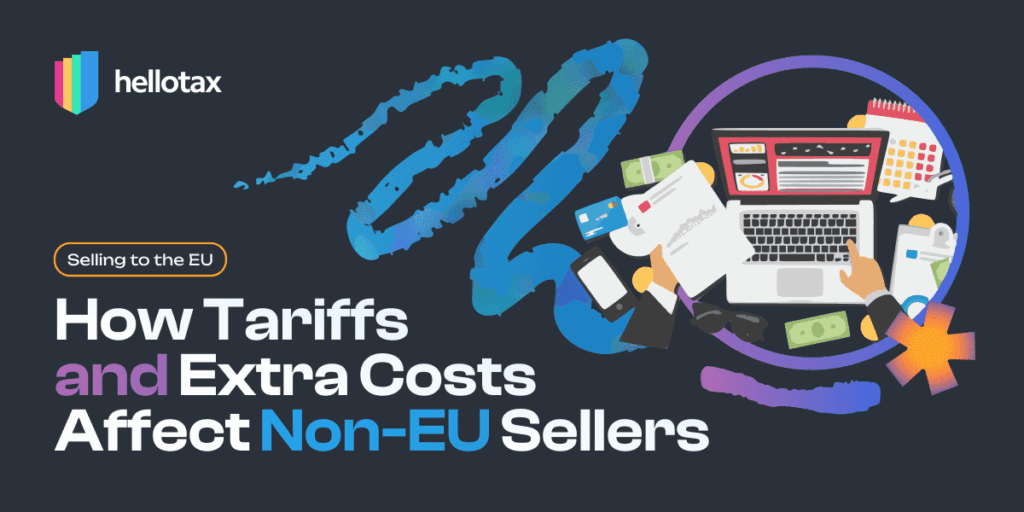Expanding your e-commerce business to customers in the European Union (EU) presents a significant opportunity to grow your revenue. However, as a non-EU seller, understanding customs duties for non-EU sellers and extra costs involved in importing your goods into the EU is crucial to maintaining profitability and competitiveness.
Brenda Varela
Last Updated on 15 May 2025

What Are EU Tariffs and Import Duties?
Tariffs, also known as import duties, are taxes imposed by the EU on goods imported from outside its borders. These import duties in the EU are designed to protect local industries and raise revenue for member states. As a non-EU seller, you must factor these costs into your product pricing to avoid unexpected losses.
For more information check here.
How EU Tariffs Are Calculated
The EU calculates tariffs based on three main factors:
- HS Codes: Goods are classified using Harmonized System (HS) codes, an international standard of names and numbers for classifying traded products.
- Customs Value: Usually based on the invoice price plus shipping and insurance costs.
- Tariff Rate: Determined by the specific HS code and the EU’s customs tariff schedule.
For example, if your product’s customs value is €1,000 and the applicable tariff rate is 10%, you’ll owe €100 in import duties.
Other Costs Associated with Selling to the EU
Beyond EU tariffs, several additional costs can impact your profitability:
- Value Added Tax (VAT): Non-EU sellers must account for VAT when selling to customers within the EU. Rates vary by country and product type.
- Customs Clearance and Brokerage Fees: Fees paid to brokers or agents who manage customs clearance processes.
- Shipping Costs: Influenced by your chosen shipping method, speed, and Incoterms (international commercial terms) used.
The Impact of EU Tariffs and Extra Costs on Your Pricing Strategy
Failing to accurately account for EU tariffs and other costs can significantly reduce your margins. It’s essential to clearly understand these expenses when pricing your products. Underestimating tariffs may force you to either absorb unexpected costs or raise prices, potentially harming your competitiveness.
How to Mitigate or Manage Tariffs and Extra Costs
Several strategies can help manage or reduce your tariff burdens:
- Utilizing Customs Warehouses: Temporarily store goods in customs warehouses within the EU to delay or reduce tariff payments.
- Selecting Fulfillment Partners: Partnering with logistics providers that offer customs management services.
- Optimizing Product Selection and Sourcing: Source products strategically from countries with preferential trade agreements with the EU.
- Leverage Technology Tools
There are software tools and e-commerce platforms that integrate customs and tax calculations directly into your checkout process. These tools can automate compliance, improve customer transparency, and reduce the risk of manual errors in shipping or VAT declaration.
Compliance and Documentation: Staying on the Right Side of EU Customs
Ensuring compliance with EU customs is critical:
- Required Documentation: Accurate commercial invoices, packing lists, and customs declarations.
- Correct HS Codes: Misclassification can lead to penalties or delays.
- Accurate Customs Values: Avoid undervaluing goods, as this can result in legal repercussions.

Book a free consultation
Our VAT experts are happy to help you. Book a free consultation today!
Real-Life Scenario: Tariffs in Action
Imagine selling electronics from China to Germany. Your shipment, valued at €5,000, is subject to a tariff rate of 12%. The import duty would be €600. After adding shipping (€200), customs fees (€100), and VAT (19%, or €1,026), The total cost including EU import taxes, shipping, customs, and VAT reaches €1,926. Clearly identifying these costs allows you to set a competitive and profitable sales price.
Conclusion
Selling internationally to the EU requires more than just competitive pricing—it demands a solid understanding of cross-border compliance and cost management.Understanding tariffs and additional import-related costs is vital for non-EU sellers aiming to succeed in the European market. Proactively managing these expenses ensures your business remains profitable and competitive.
By staying informed and proactive, you can navigate the EU’s complex import rules with confidence and focus on growing your customer base across Europe.
For expert assistance in handling VAT and customs compliance, hellotax provides comprehensive solutions tailored specifically for non-EU sellers. Reach out to us today to simplify your EU selling process.
